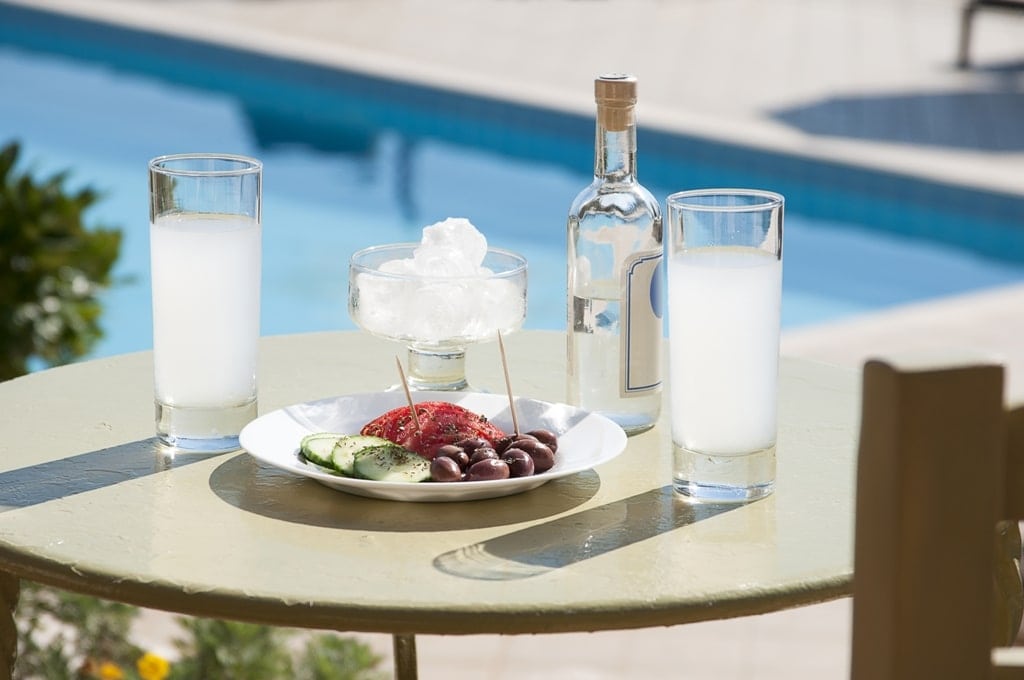Part of the fun of visiting a country is to discover its food and drinks. Visiting Greece or the Greek Islands certainly has plenty of surprises in store with both! A variety of different spirits have been made by the Greeks for centuries. Some of them, like Ouzo, is known and loved around the world, but others are produced in small quantities on individual islands.
As well as explaining their history and how they are produced, we also describe how they should be served for maximum enjoyment. Once you have discovered some of these excellent Greek drinks you will be wrapping up a couple of bottles amongst the clothes in your suitcase for a lasting memory of Greece!
Enjoying a relaxing drink in the evening is always fun. Take your glass raise it high in the air and toast everyone around you with the words-
Yia yamass – Cheers, to your good health!
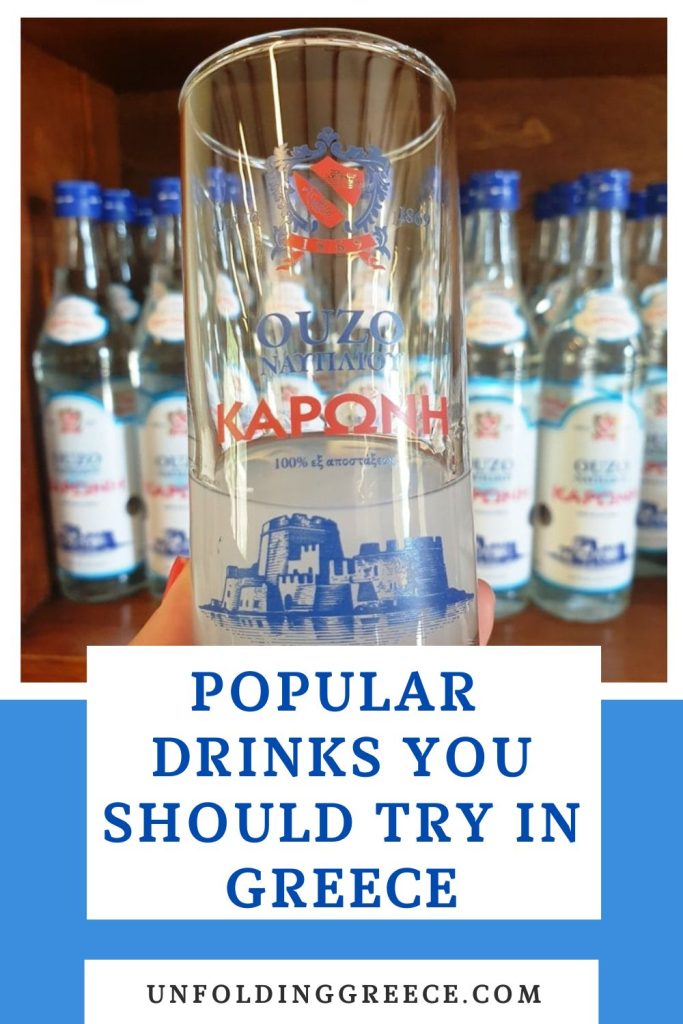
9 Popular Alcoholic Drinks to Try in Greece
1. Ouzo
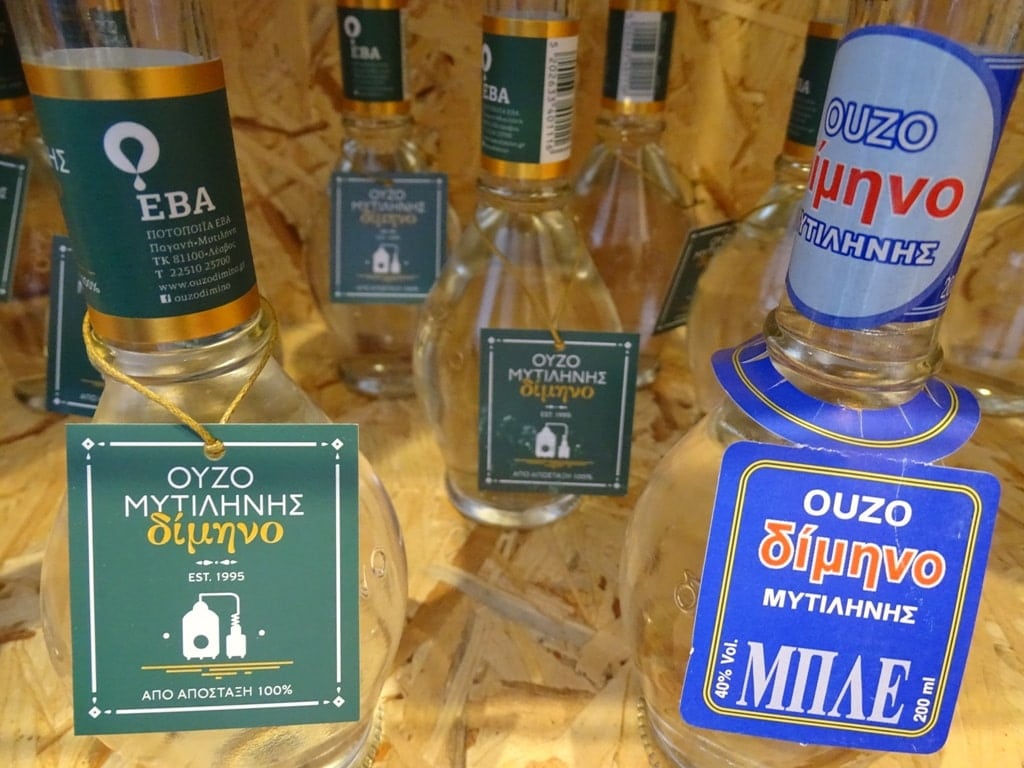
Ouzo is a dry, clear, anise-flavored aperitif that is popular all over Greece. It is similar to a liqueur and very like raki, pastis, and sambuca in flavor. Plomari on the island of Lesvos is considered the birthplace of Ouzo. It was first made by distilling grape skins and stalks that were left after wine production. The liquid is then distilled with aniseed and local herbs until it has a high alcohol content.
Today, there are more than 300 distilleries in Greece, each with its own recipe that requires the spirit to be passed through the copper distillation pipes a certain number of times. Many producers believe that it is the water that they use in the production that gives their ouzo its unique flavor. On the island of Lesvos, there are 17 manufacturers and they account for 50% of ouzo production. The top-selling brand of ouzo is Isidoros Arvanitis which is made in Plomari in Lesvos.
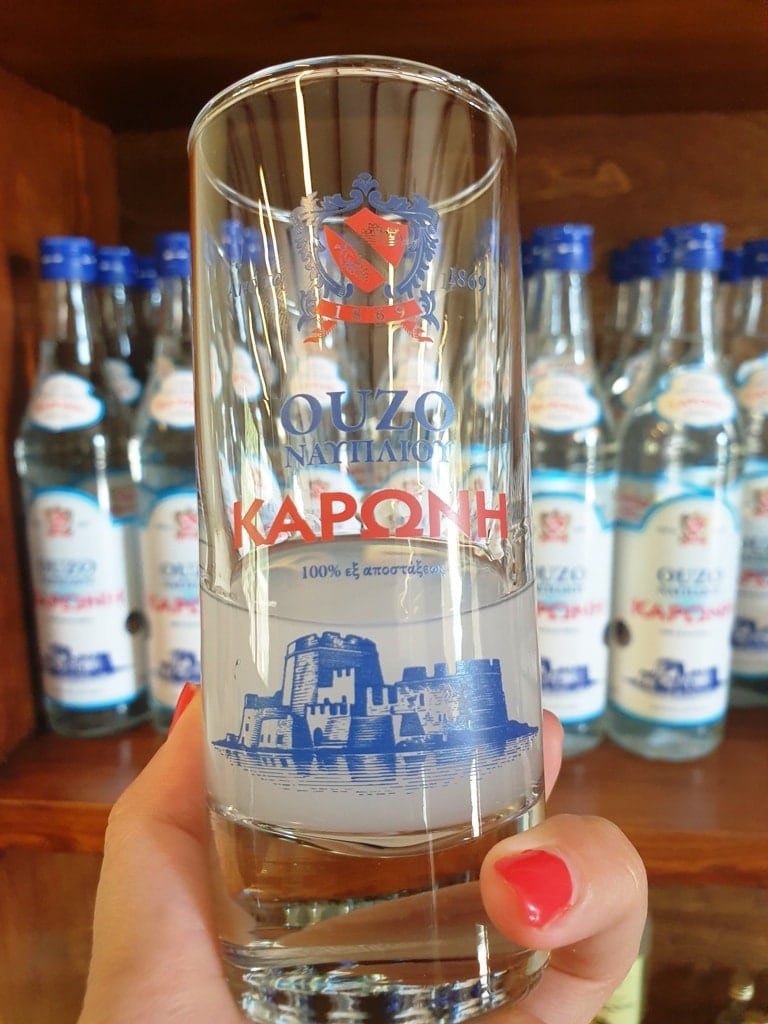
Ouzo is considered an important part of Greek culture and is usually enjoyed late afternoon or early evening. It is best drunk cold, rather than really chilled, but with added ice. When ice is added to ouzo it turns a milky color as the anise reacts with the ice. Always enjoy a glass of ouzo at a leisurely pace, with a few plates of mezédhes, as it is too strong to drink on an empty stomach! Ouzo is never served with a meal as its taste does not complement Greek dishes.
2. Tsikoudia /Raki
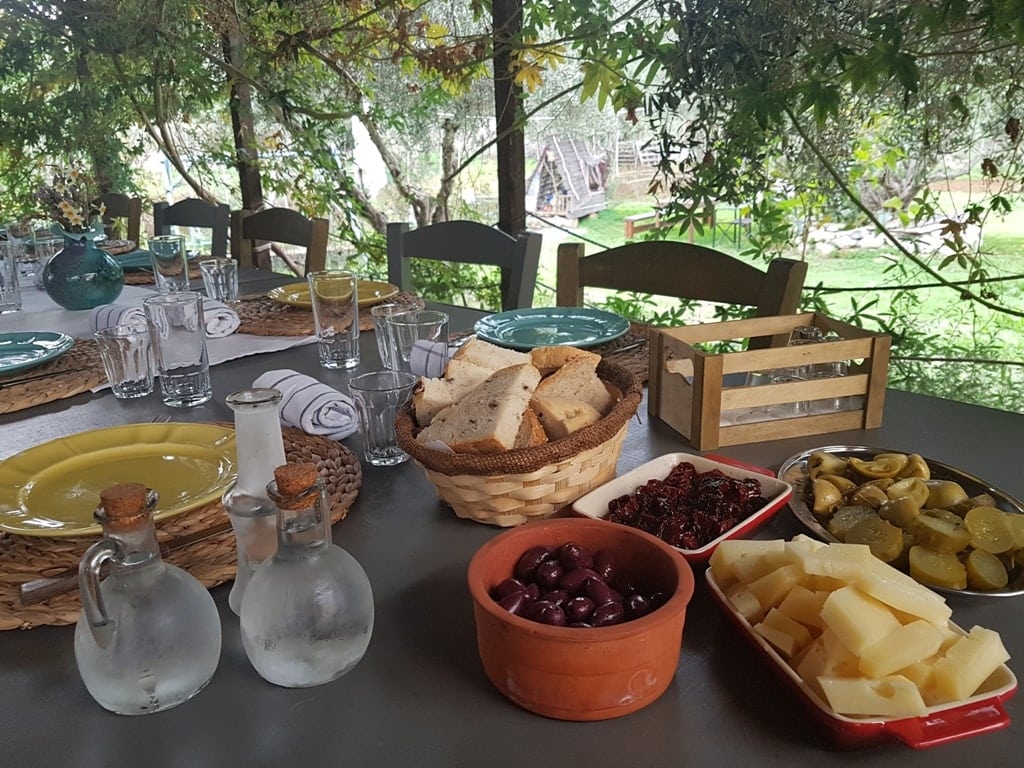
Tsikoudia is enjoyed across the island of Crete, where it has been made for centuries. It is not unlike Tsipouro that is made in other parts of Greece and during the years of the Turkish occupation (1645-1897) it was often referred to as Raki as it is not dissimilar to the popular Turkish spirit.
The spirit is made from all the leftovers from wine production and this usually begins in late October each year. The grape skins and other remains are fermented for six weeks in a barrel and then distilled. In almost every village in Crete, there are two families that have been given a license to produce Tsikoudia – but be warned, it varies considerably in alcoholic strength!
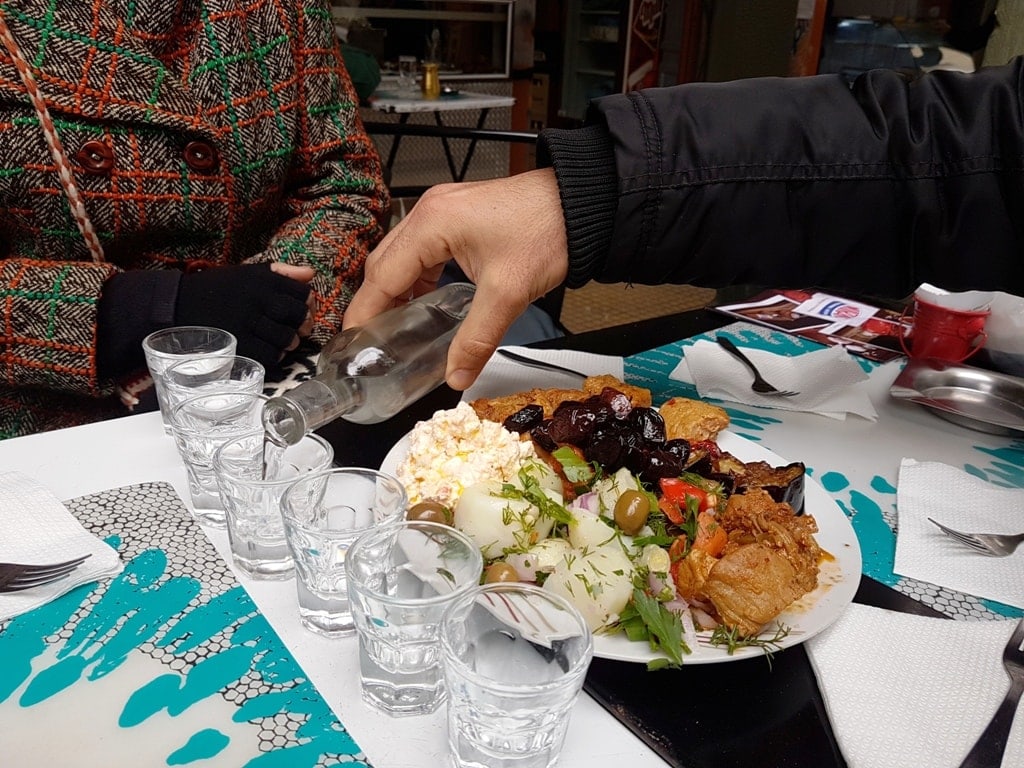
Tsikoudia is traditionally kept in the freezer and served icy cold after a meal as it is believed to aid digestion. Some bottles of Tsikoudia are flavored with lemon rind, rosemary, or honey – Rakomelo. People living in the Cycladic islands produce their own variety which is called ‘souma’.
3. Tsipouro
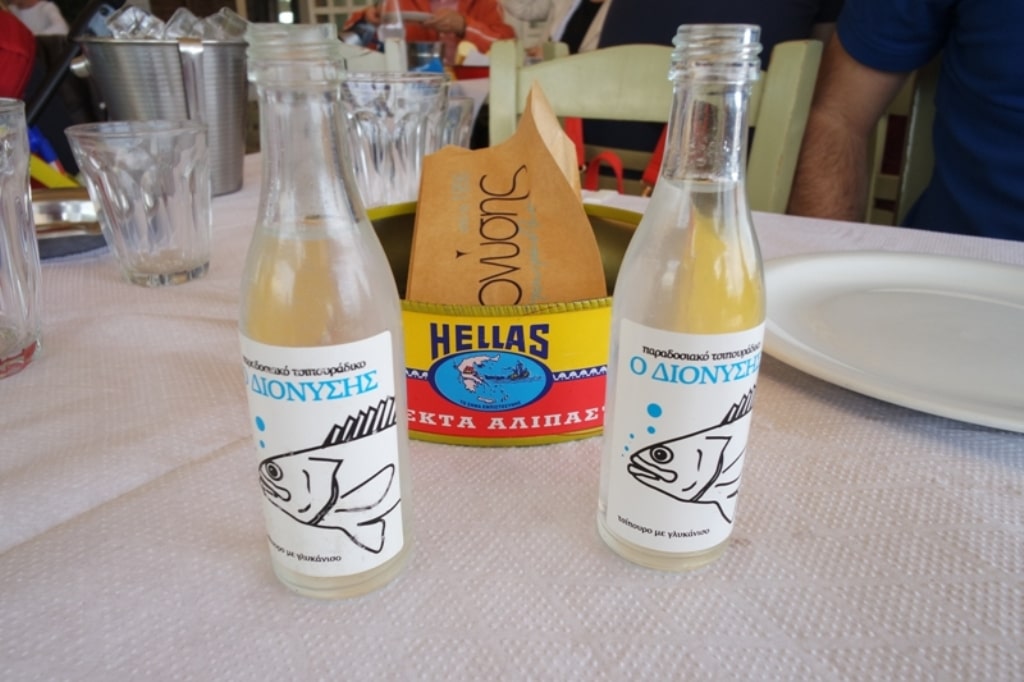
This popular spirit was first made during the 14th century by the Greek Orthodox monks living on Mount Athos. Today, it is made in several regions including Thessaly, Epirus, and Macedonia.
Tsipouro is a strong distilled spirit (40-50% alcohol) made from the vines and grape skins once the precious grape juice has been extracted. A form of Tsipouro, called Apostagma, is made from the whole grape and is considered far superior. A barrel-aged Tsipouro is also made and is not unlike whisky. An anise-flavored Tsipouro that tastes very like Ouzo (although is manufactured in a completely different way) is made in Thessaly and Macedonia.
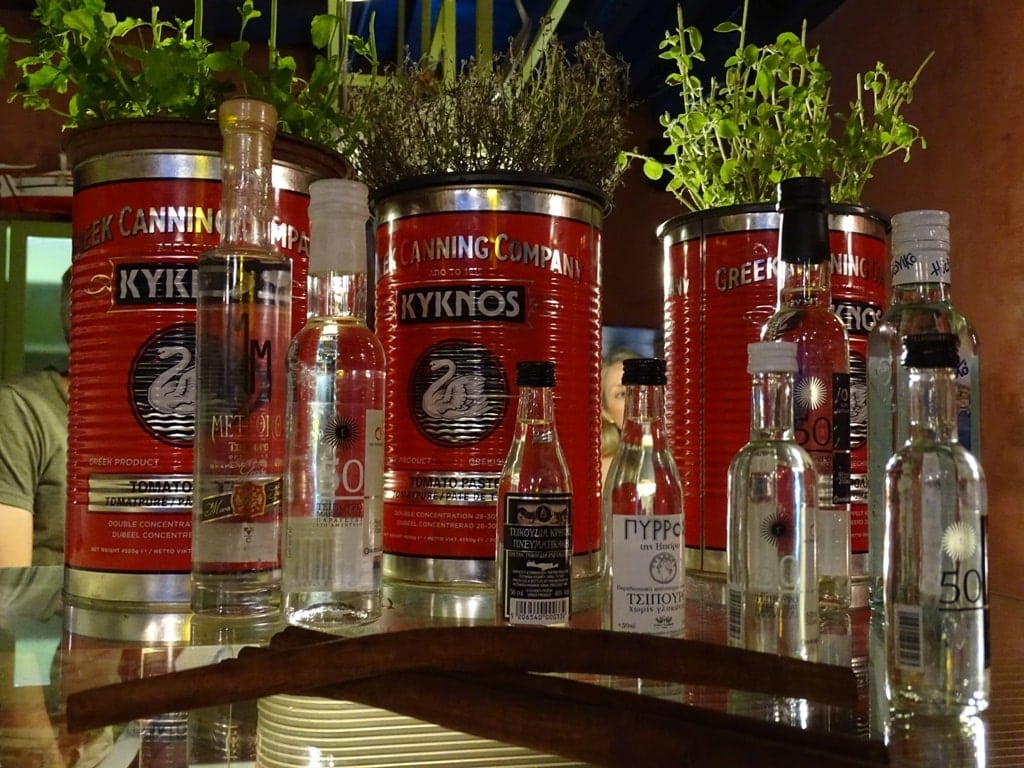
Tsipouro is often stored in the freezer and served neat with ice or diluted with water and accompanied by a selection of appetizers (Mezé).
4. Mastika from Chios
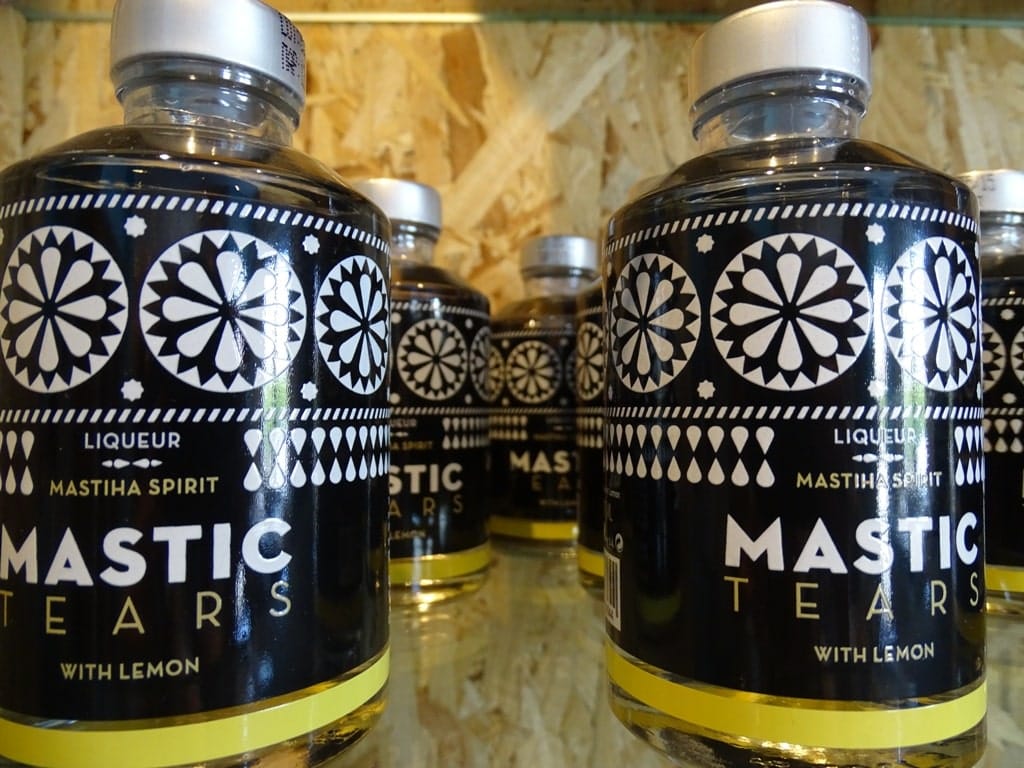
Mastic has a very distinct flavor and is derived from the resin of the small mastic tree, that grows abundantly on the island of Chios. The mastic is collected from the trees by scoring a deep narrow channel in the bark and tying a collecting pot at the bottom of the channel. The resin is mixed with sugar and distilled to make a liqueur that tastes of fresh pine and herbs.
Since ancient times, Mastika has been produced on the southern part of the island in a series of villages referred to as the ‘Mastichiades villages’. Mastika has been produced for 2,500 years and was first mentioned in the 1st century BC in the Orpheus’ Hymns. it is said that Mastika was much favored by Hippocrates, who believed that the drink contained special properties for aiding digestion and soothing stomach ulcers. The mastic resin has also long been used as chewing gum.
A bottle of Mastika should be stored in the freezer as the liqueur will not freeze, but it best served really chilled in a small glass at the end of a meal. Mastika can be mixed with Prosecco as an aperitif, or with various mixers and spices to create some fun cocktails.
5. Tentura of Patras
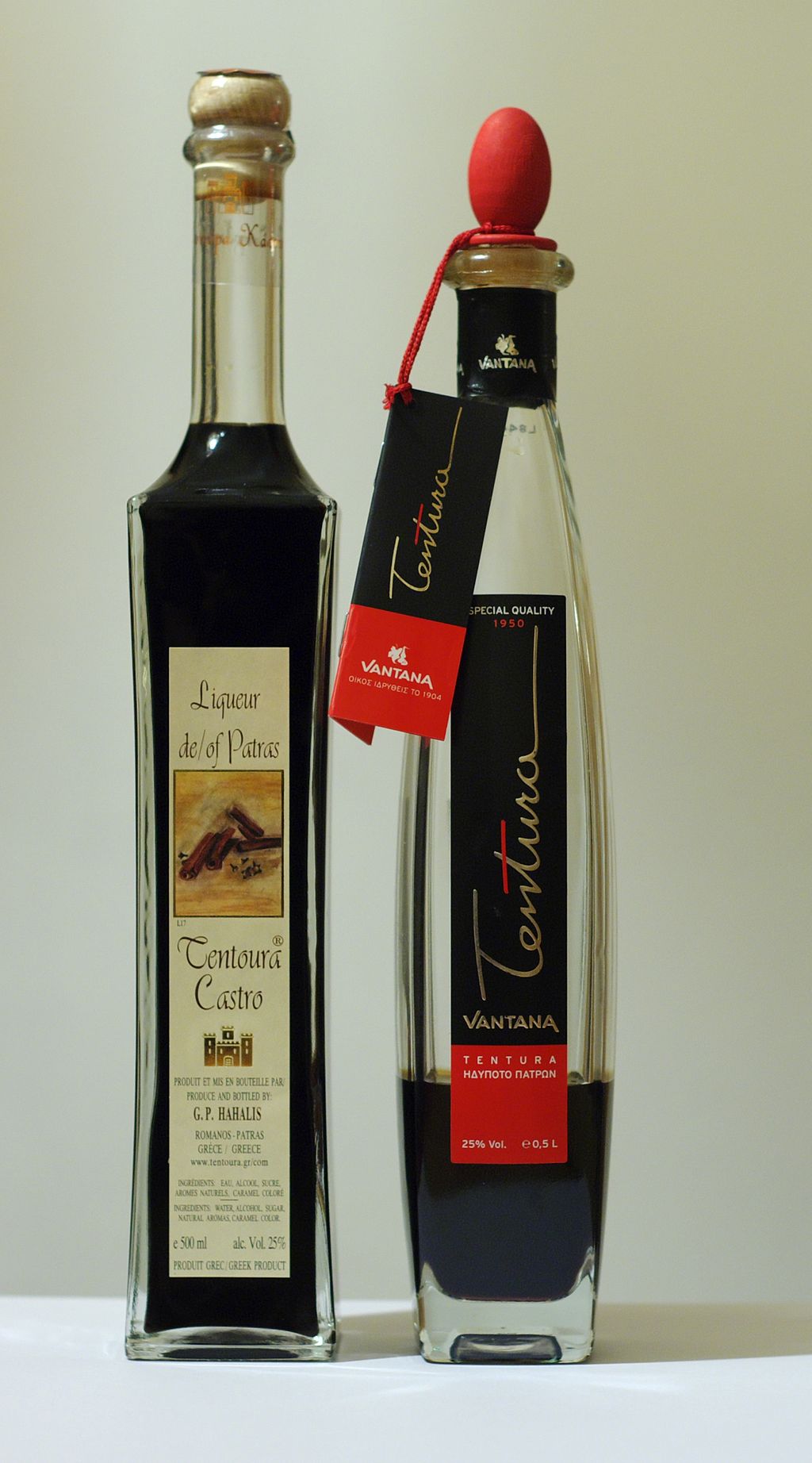
Since the 15th century, Tentura or Tintura has been made in the port city of Patras. Its name comes from the Italian word for tincture. This liqueur is a lovely copper color and is made by fermenting locally grown citrus fruits including mandarin, with cinnamon, vanilla, and nutmeg. The base spirit for Tentura is usually brandy, but sometimes rum. Tentura has a really strong Christmassy aroma. In Patra Tentura has the nickname ‘moschovolithra’ meaning ‘she who throws scent’.
Tentura is usually served at room temperature in a small glass ‘on the rocks’, but can also be enjoyed added to coffee – an Espresso Corretto. Tentura can be used in winter fruit salads, and milk puddings and is really delicious when added to pecan pie!
6. Kumquat Liqueur from Corfu
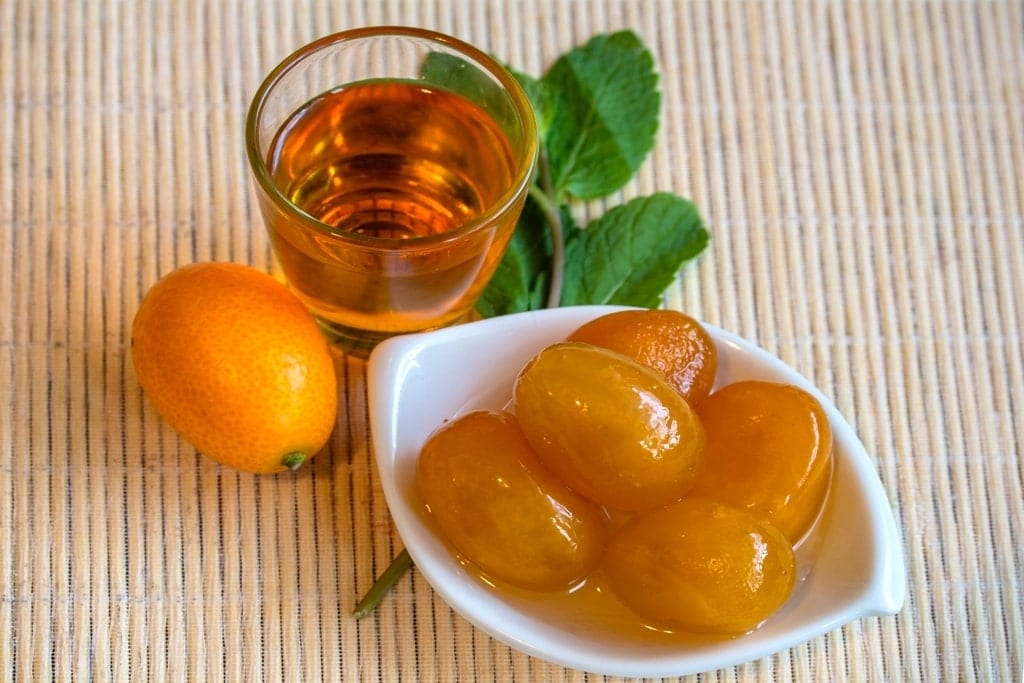
The kumquat is a small, oval-shaped orange fruit that has a sweet-tasting skin and bitter flesh. Kumquat tastes marvelous when transformed into a liqueur! The kumquat is a fruit that is native to China and its name means ‘golden orange’ in Chinese. The kumquat was first brought to the island of Corfu in 1860 by Sidney Merlyn who was a British agronomist who felt it would grow well on the island – it certainly did! Today it is one of Corfu’s main crops and the kumquat liqueur, its popular trademark!
The Mavromatis family began experimenting with making a liqueur from kumquats in the early 1960s and opened their first factory in Corfu Town in 1965. The liqueur has proved extremely popular and the family has moved the business twice to larger premises and today, the business is run by the third generation of the family!
Today, the Mavromatis family uses 80% of the island’s kumquats to produce one million bottles of liqueur and thousands of jars of kumquats preserved in sugar syrup, whilst Corfiots produce kumquat jams, marmalades, and biscuits.
There are two versions of the liqueur; the first is the ‘red’ which is a clear dark and sweeter liqueur (20 % alcohol) which is made from just the skin and the other is the white liqueur (15% alcohol) which is made from the fruit pulp. The latter is popular for serving after a meal accompanied by coffee.
The red can be served ‘on the rocks’ or mixed with a fruit juice or made into a cocktail, whilst the white liqueur is perfectly served ‘on the rocks’. Both versions taste great when used to flavor cakes, ice creams, and fruit salads. If you are considering a bottle of kumquat liqueur as a holiday gift to take home, it is perfect as the kumquat is a symbol of good luck in China!
7. Kitron of Naxos
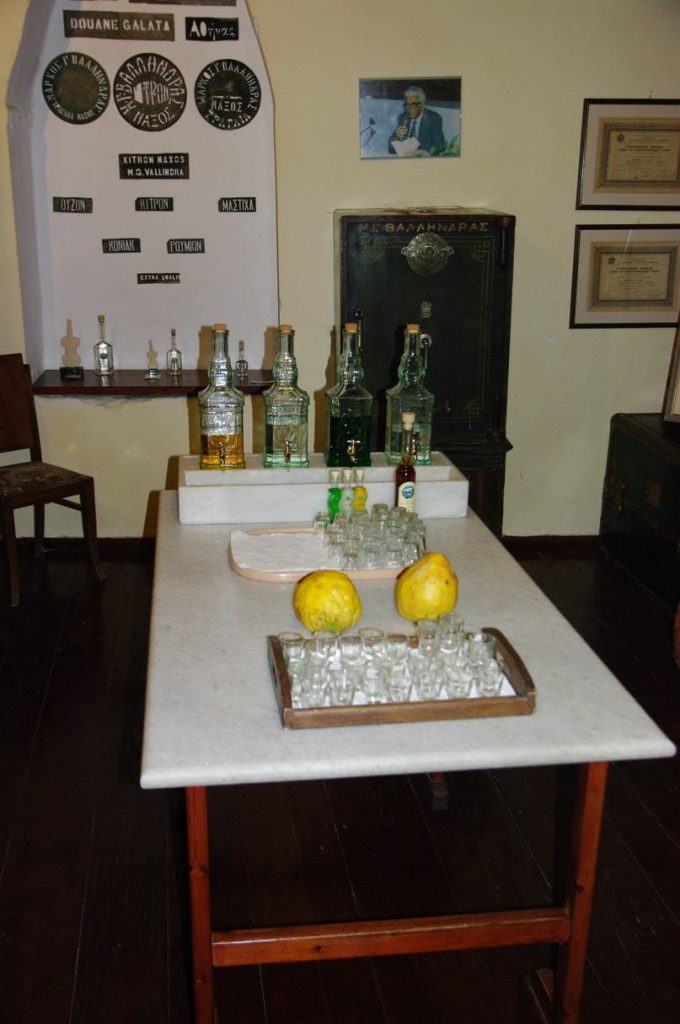
The citron tree (Citrus medica) has flourished on the island of Naxos for more than 300 years and its cultivation plays an important part in the agricultural policy of the island. The citron is similar, but not the same as lemon.
The fragrant leaves of the kitron tree were first used to make a liqueur nearly 200 years ago and the island’s first distillery- Vallindras- opened in 1896 and the first bottles of Kitron of Naxos were exported in 1928. Today, there are two seasonal distilleries on the island – Vallindras and Pomponas- and both are open to the public with tasting sessions and gift shops!
The leaves are hand-picked from the trees between October – February when they are most fragrant. The leaves are mixed with water and are distilled several times in large copper stills. There are three different types of Kitron.
The green variety is the sweetest and has the lowest alcohol content (30%), the clear-colored Kitron is a medium strength and the golden-colored Kitron has the lowest amount of sugar and highest alcohol content (40%).
Kitron of Naxos is traditionally served in small fine glasses as an aperitif before a meal. The Kitron Café Cocktail Bar in Naxos Town is a popular place to enjoy a variety of cocktails made with liqueur and an amazing Kitron sorbet.
8. Beer (Greek breweries)
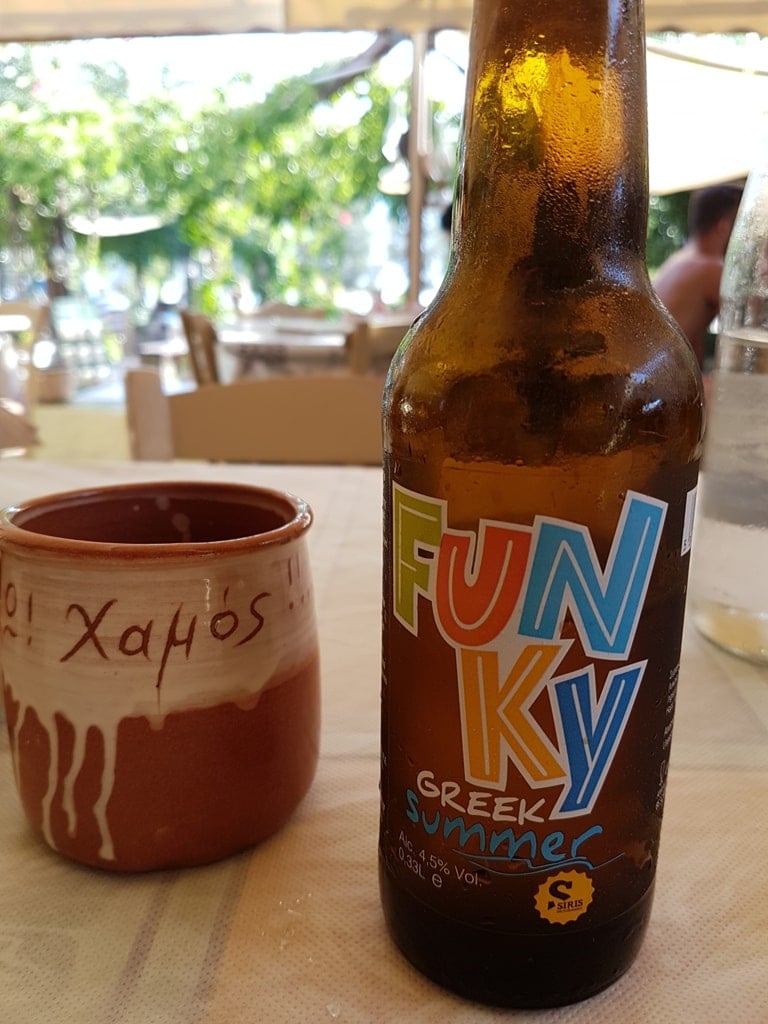
During the summer months, nothing beats a lovely cool beer and if you are in Greece, you will be delighted by the fantastic array of locally brewed beers on offer! Beer is produced all over Greece and the islands and new breweries are opening.
Traditionally, the breweries imported the raw materials, but now, some of them are growing their own hops and barley. Many of the breweries produce several different beers, including IPA’s, Stouts, Pils, Lagers, Weiss, and Ales as well as fruit beers, so you will have fun discovering which is the definitive one for you!
The two biggest names in Greek beer are Fix and Mythos and in recent years, both have been bought out by multi-nationals, Heineken and Carlsberg.
Zeos: In distinctive bottles, this popular label is made in the Peloponnesian Argus. There are six different beers in the range – including Pilsner, Lager, and Black Weiss- and all of them are flavored with local honey, different fruits, etc.
Voreia: This beer is produced by the Siris microbrewery that is situated about one hour from Thessaloniki. Its Imperial Porter is a lovely beer with hints of cinnamon and vanilla and the brewery also produces a stout, that is almost chocolatey in taste, plus a really good Pilsner.
Septem: This is a beer you will frequently spot in Evia, where it is produced. There are numerous different Septems in the range including a Pilsner, pale ale, and golden ale. September 8th is a really good IPA (Indian Pale Ale), which is a lovely amber color. The brewery won the European Brewer of the Year award in 2015.
Nisos from Tinos: This is definitely a great beer and the judges thought so in the European Beer Competition in 2014 when it was awarded the silver star – an amazing achievement as it had only been produced for 18 months. It is a 100% natural Pilsner that is made with certified organic products and flavored with local herbs. There are now four flavors to choose from in the range.
Santorini Donkey: This may sound like a crazy name for a brewery, but this Santorini brewery produces yellow, white, red, and even a Crazy Donkey! Red Donkey is its amber ale, which is full-bodied and really rich in color.
Santorini Volcan: Named after the volcano that erupted creating the island of Santorini, this brewery makes two popular beers – Santorini Blonde and Santorini Black.
Corfu Red: This is an amber ale that is unpasteurized and unfiltered. It is a slightly sweeter beer with a lovely fruity flavour.
Lesvos Sigri: This is a small but popular brewery on the island of Lesvos – the first one- that produces two popular beers – Nissipi Blonde Ale and Sedusa Red Ale
Piraiki: This beer has been created by a pharmacist in Piraeus and it is a beer made with no additives or preservatives.
9. Greek Wines
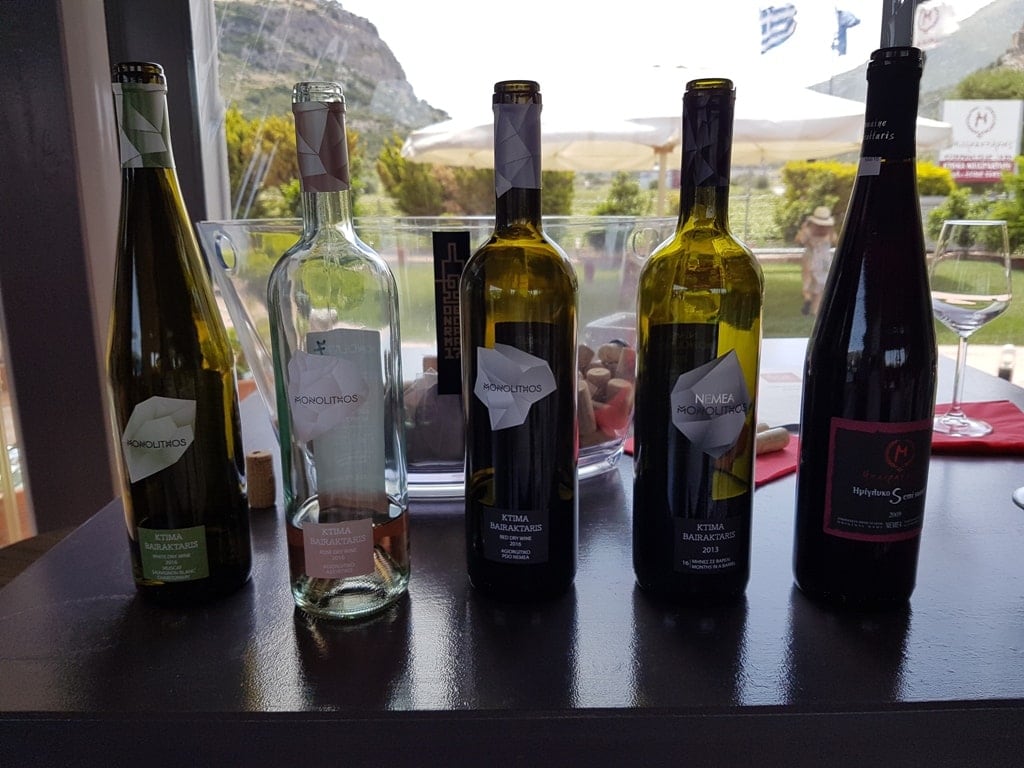
In ancient times, Greece was a major wine producer, but for centuries afterward, its wines were mainly for the local market. In the last ten years, Greek wines are being discovered and appreciated by wine lovers across the world and some of them can now be found in European shops.
There are still many different Greek wines, that are well worth trying and are little known, such as the lovely Moraitis from Paros, made from the Monemvasia grape. You will definitely have fun discovering the wines from Greece!
Retsina: Retsina is probably the best known Greek wine and is a real specialty as it is a white wine infused with the sap of Aleppo pine, which gives it a very distinct taste. Interestingly, both the Assyrtiko and Savatiano grapes are used and the results are quite different. There are ten top producers of retsina, and many mediocre ones, so try several to decide which you like best!
Assyrtiko: This is the best known Greek wine and produced everywhere, although it was first made on the island of Santorini. It is a really lovely white wine, with a fruity taste, that has a hint of citrus. An oaked version has recently appeared on the market with the name ’Nikteri’. Look out for the Santo wines label from Santorini as this wine is good value and is crisp and light with a touch of oak and Gaia Thalassitis and Atlantis Santorini is another from the island.
In this wine, you can almost taste that the grapes were grown on volcanic, mineral-rich soil. Vassaltis Santorini, is not a cheap Assyrtiko, but having said that, it is worth paying for as it is a truly excellent wine, fragrant, complex, and vibrant – just enjoy!
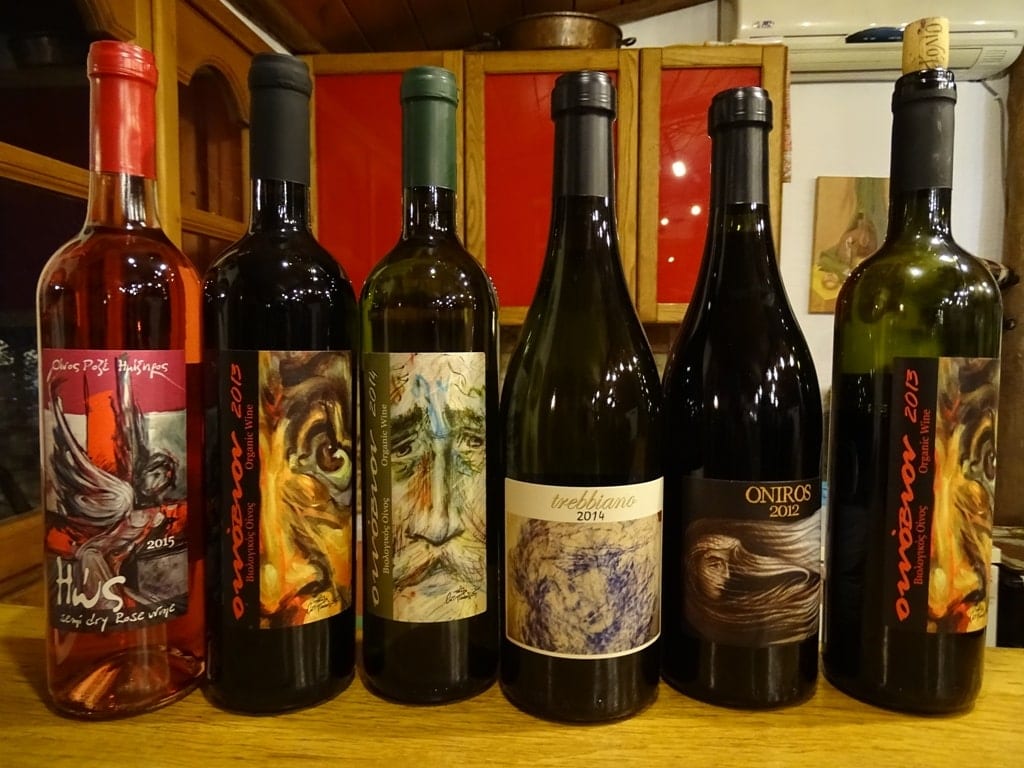
In Tinos, wines have been produced for the first time in 3,000 years and T-oinos is a really excellent Assyrtiko, elegant and perfect with seafood and spicier dishes. If you are in Crete, watch out for the award-winning Lyrakis Voila.
This dry refreshing wine is also made from the Assyrtiko grape, grown in eastern Crete, by the family-run winery that produces this label. Kokotos Three Hills is a blend of predominantly Assyrtiko and Cabernet Sauvignon and the result is a light refreshing red that has been barrel-aged for six months
Vinsanto is another popular wine from Santorini that has the aroma and character of red wine but is made from a blend of three white grapes- with the main grape being Assyrtiko. If you are spending time on the island, it is worth trying some wines made from Santorini’s other grape – Aidani.
Limniona from Thessaly: This wine is Greece’s answer to Pinot Noir! It is a lovely light red with fragrant aromas. Many of the vineyards were cleared in the 1990s to make way for faster-growing varieties, but Christos Zafairakas kept his family vineyards and winery – Domaine Zafeirakas- producing wine with this grape and has had great success as his is now regarded as one of the best!
Moschofilero: The grapes for this wine grow abundantly in the Central Peloponnese. It is a white wine, that is really aromatic and has notes of peaches and lemon. One particular label to watch out for is Thea Mantinia from Semeli
Malagousia: Until a few years ago, there was just one vineyard in northern Greece, where the malagousia grape was growing, but now that the wine is becoming increasingly popular, there are several different wines being made. This wine is a rich white, with several characteristics that are similar to Chardonnay. Oenops is a label to look out for as this is a combination of assyrtiko and malagousia and this is a good robust wine with a slight hint of herbs that is perfect for enjoying on its own or with some good Greek cheese.
Savatiano: The Greek version of Chablis! This delightful wine has many of the same characteristics and is available barrel-aged.
Agiorgitiko: This is a popular indigenous grape from the Nemea region in the Peloponnese and the wine is not dissimilar to the French Cabernet Sauvignon. Agiorgitiko is a really full-bodied, fruity red wine with a hint of spices like nutmeg and oregano. The very best wines come from the highest part of Namea region and Bizios Estate’s Argiorgitiko is a particularly good one. You can also get a rosé version which has an amazing deep pink colour.
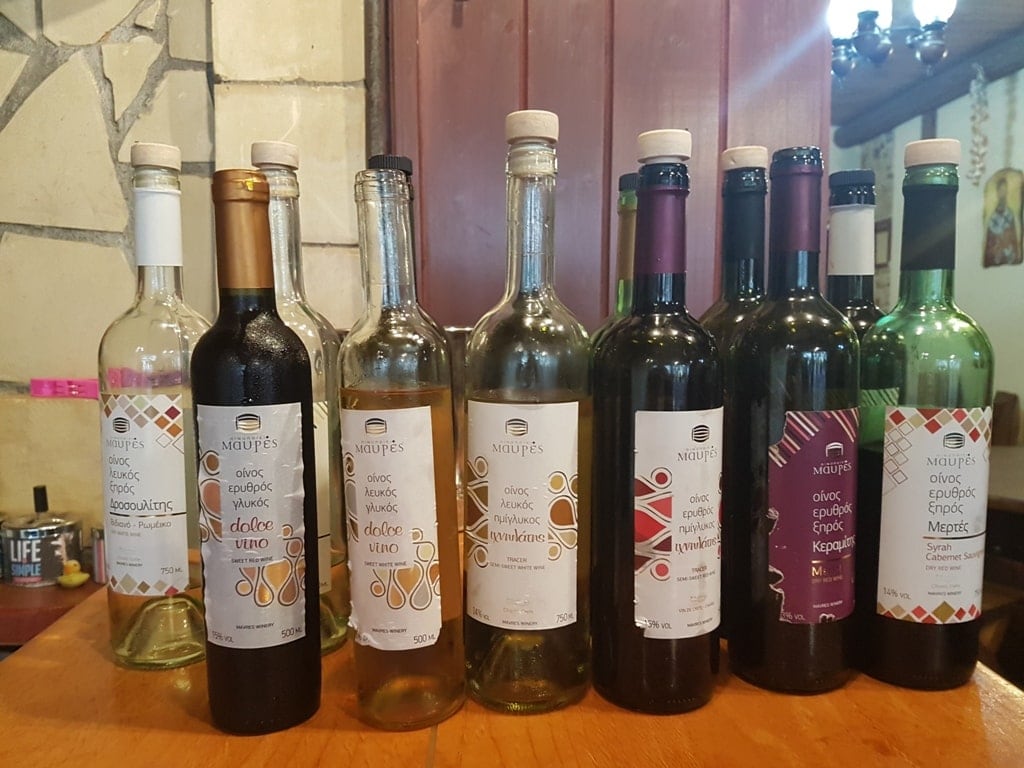
Xinomavro: This cherry red wine comes from Naoussa’s vineyards where the vines grow on limestone. Many sommeliers will describe it as a world-class wine and it is one that actually improves with age. Its name means ‘acid black’ but this is inaccurate! There are several labels to watch out for from the Jeunes Vignes winery including Thymiopoulos Atma Xinomavro (a delightful ruby red young wine), Earth and Sky. Boutari Legacy 1879 is another good label too!
You will also come across some really good blends made with this grape including Rapsani and the SMX Syrah Xinomavro produced by the Alpha Estate.
Reds from Crete: On the southern parts of Crete you will see endless vineyards with the indigenous Kotsifali grape flourishing in the warm sunshine and others with the Mandilaria grape. This grape is often combined with Syrah for a lovely smooth, fruity wine.
Muscat of Samos: If you enjoy Muscat, you will be impressed by the island’s take on this wonderful wine! There are a variety of different ones available in different levels of sweetness and all with the most amazing aromas.
Limnio: The Limnio variety is a really ancient grape that is being grown organically on the coast at Thrace with great results. Ktima Vourvoukelis is producing a really good young red that goes so well with souvlaki drenched in lemon juice!
Tip: If you are flying with hand baggage only, liquids cannot be taken on board the flight, but you are allowed to purchase bottles on sale in the airport as they have been carefully security checked.
You might also like:
Vegan and Vegetarian Greek Dishes
What is Grece’s National Dish?
Famous Greek Desserts

